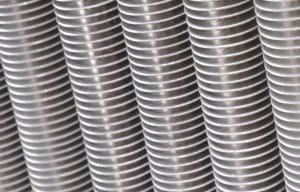 For many companies to continue operating in more demanding and competitive markets, they’ve had to enhance many of their operations using increasingly more powerful technologies. The specific technologies and systems that companies utilize can differ greatly, but one of the more common areas of advancement for most companies has been the area of electrical thermal management. The goal of most technological innovations has been to help make technology more powerful, more effective, and more efficient. Today, we explain what that has meant for companies’ electrical thermal management systems, and how the approach to electrical cooling has evolved over the years.
For many companies to continue operating in more demanding and competitive markets, they’ve had to enhance many of their operations using increasingly more powerful technologies. The specific technologies and systems that companies utilize can differ greatly, but one of the more common areas of advancement for most companies has been the area of electrical thermal management. The goal of most technological innovations has been to help make technology more powerful, more effective, and more efficient. Today, we explain what that has meant for companies’ electrical thermal management systems, and how the approach to electrical cooling has evolved over the years.
Enclosures can be cooled without chilled air
One of the most impactful advancements of electrical thermal management has been the elimination of the need to utilize chilled air to cool electrical enclosures. Traditionally, this need has been the source of many of the troubles that plague thermal management, or at least make optimizing it difficult. For example, generating chilled air and continuously circulating it through an electrical enclosure requires large, complex machinery such as air conditioners and air compressors. The complexity of these solutions demands large amounts of energy, and frequent maintenance and repairs of their many different mechanical parts. When heat exchangers made it possible to efficiently cool enclosures without the use of chilled air, the possibilities of enhancing thermal management became much more easily attainable.
Energy requirements are much lower
There are many different advantages that more modern and advanced heat exchangers have provided for most companies. Many of them stem from the significant reduction in energy requirements that result from utilizing more natural and eco-friendly heat transfer processes. Instead of utilizing chilled air to keep enclosures cool, heat exchangers consist of an eco-friendly cooling fluid constantly absorbing and transferring waste heat. With no need to consistently generate chilled air, and with simplified cooling units that require much less maintenance, companies can maintain efficient, high-performance electrical cooling while using only a fraction of the energy that more traditional solutions require.
Electrical cooling is more eco-friendly
Making electrical cooling more energy and cost efficient has been a significant factor in the evolution of thermal management. In addition, the more natural methods they use to transfer waste heat has also helped make the process a much more eco-friendly one. In most industries, the push for more environmentally friendly business practices has been significant, and traditional electrical cooling methods haven’t always fit well into those endeavors. With more evolved heat exchangers, however, the reduced energy needs, elimination of harmful chemicals, and simplified electrical cooling methods help make for a much more efficient and eco-friendly system of thermal management.
For more information about how modern thermal management has evolved for most companies, call Noren Thermal Solutions in Taylor, TX, at 866-936-6736.







